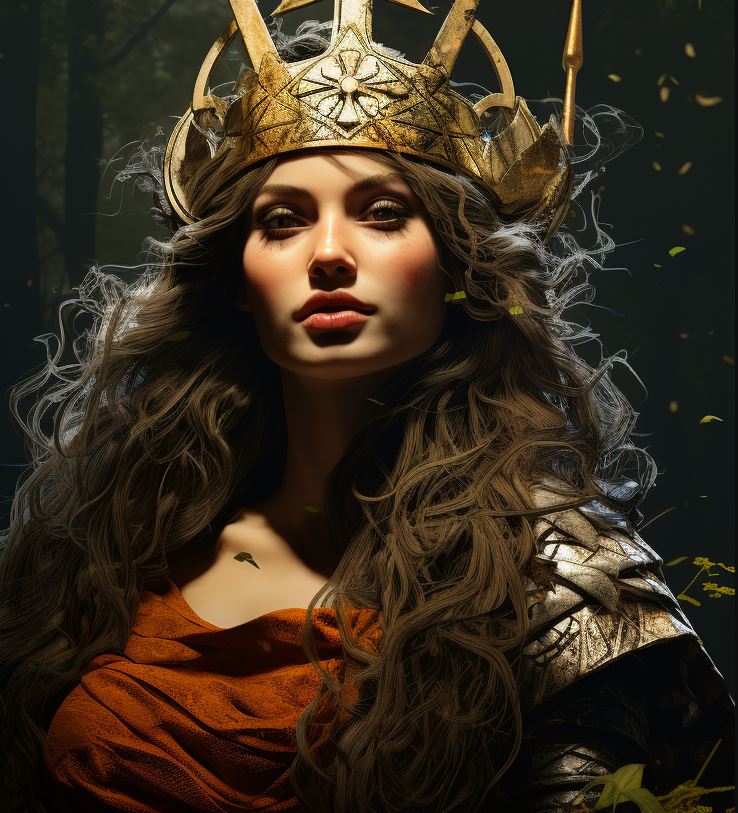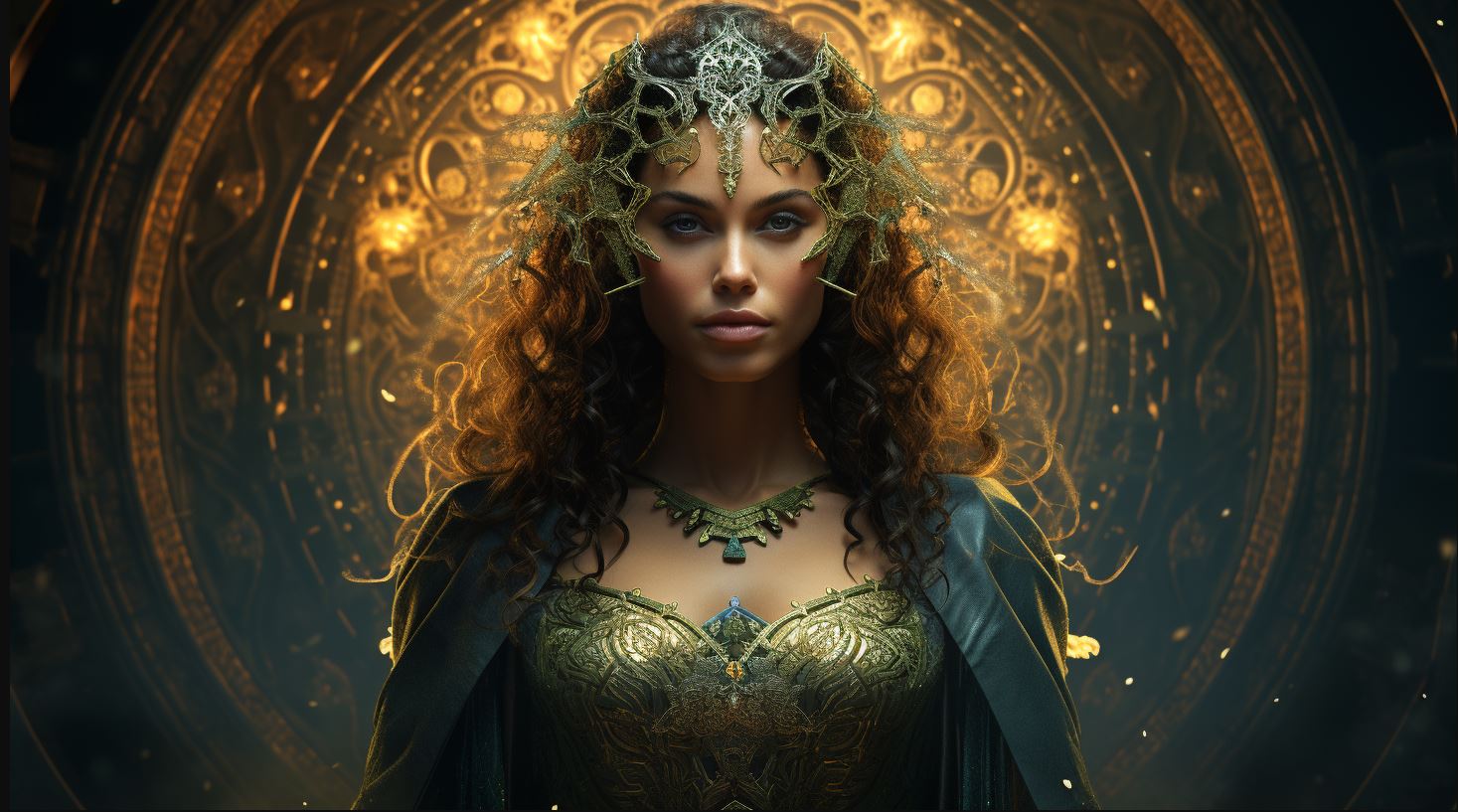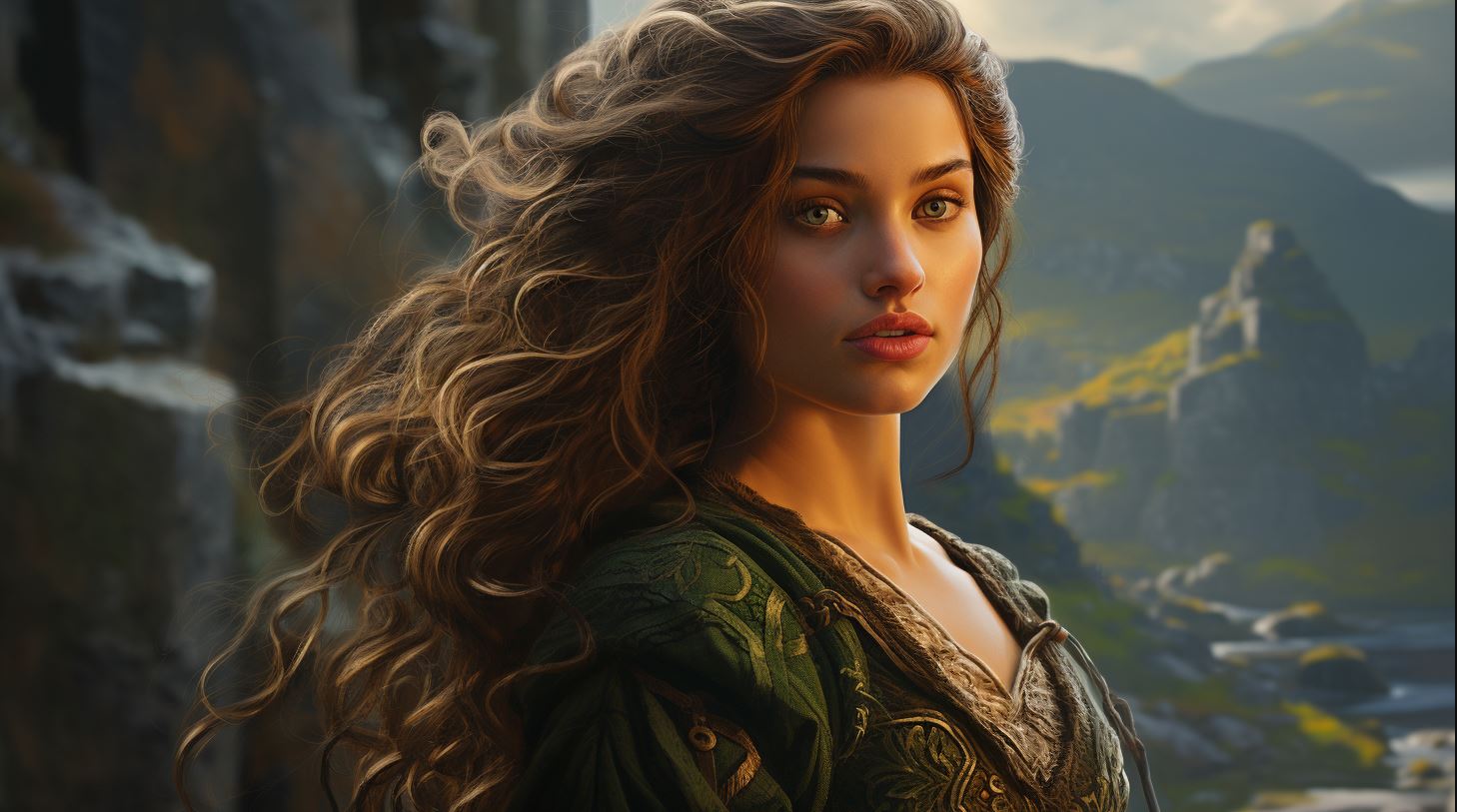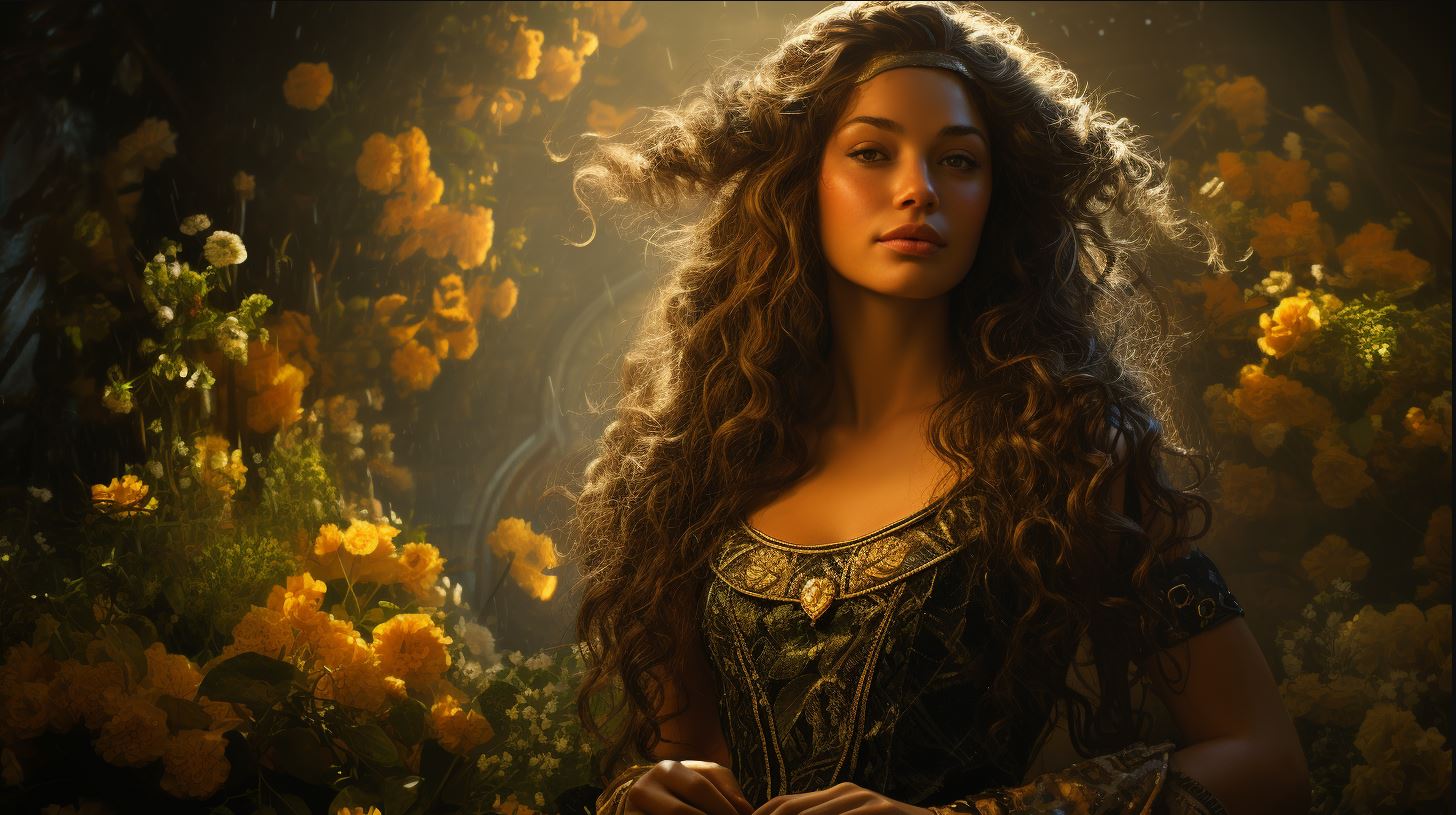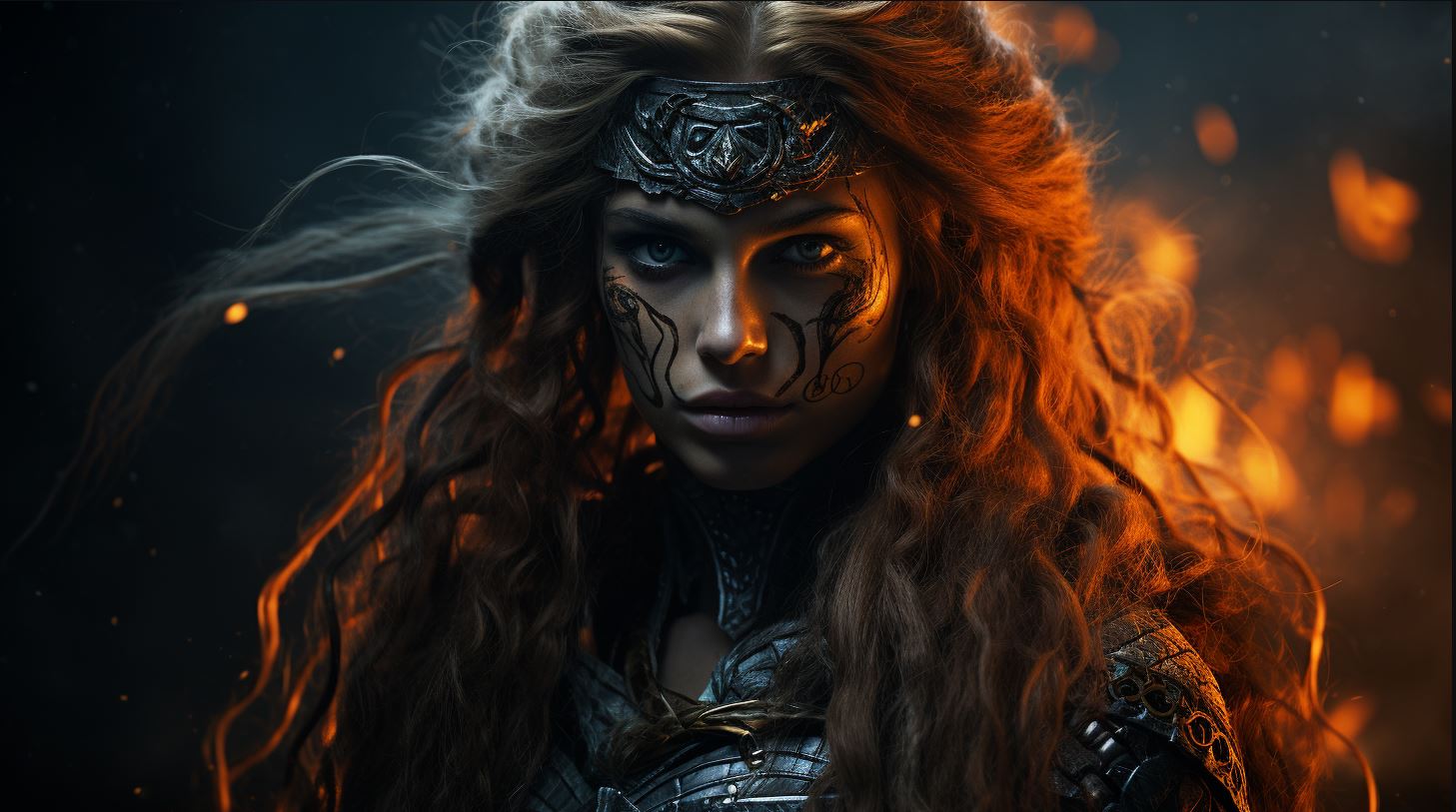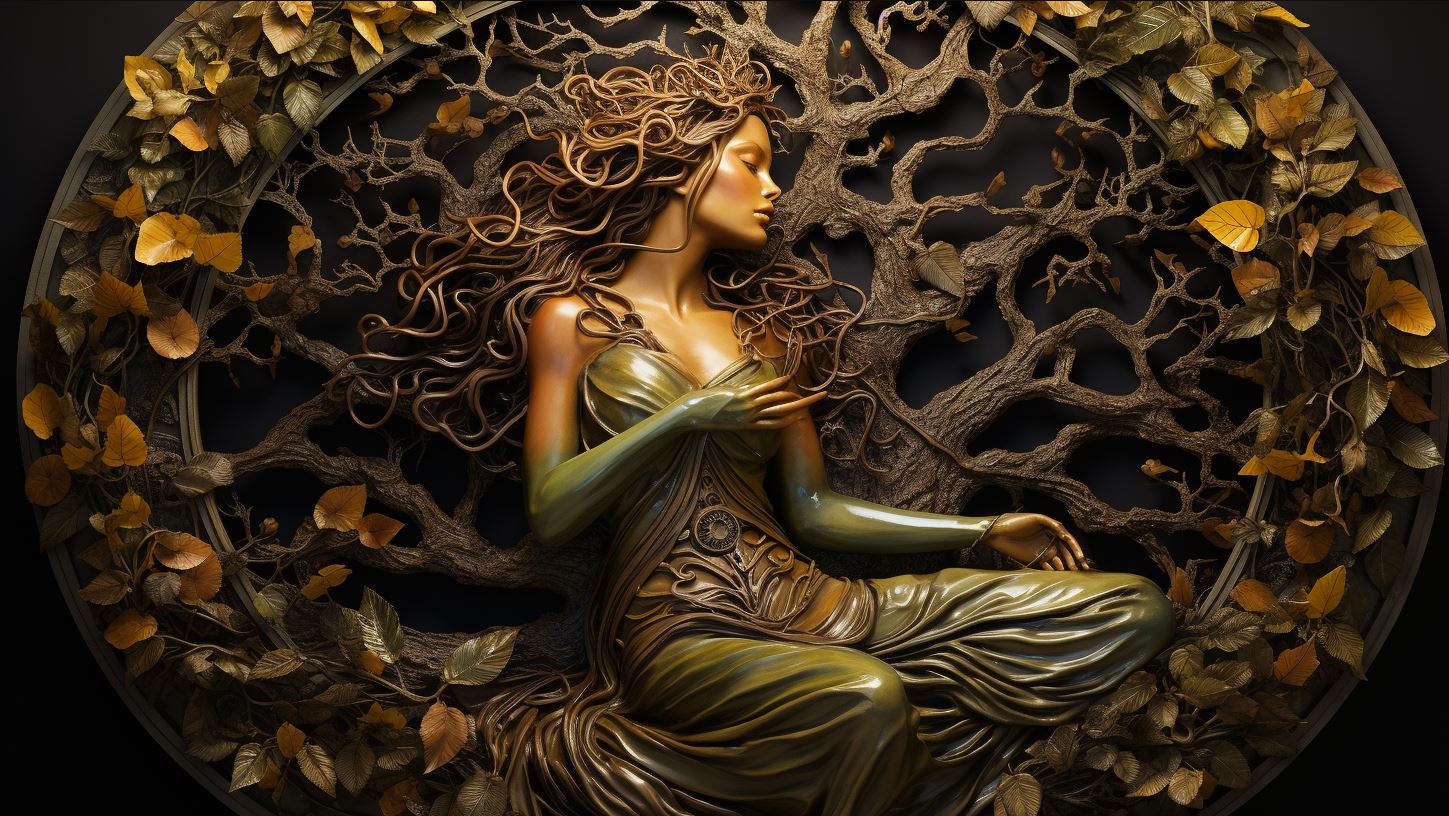Anu Celtic Goddess: The Sacred Mother of Celtic Deities Unveiled
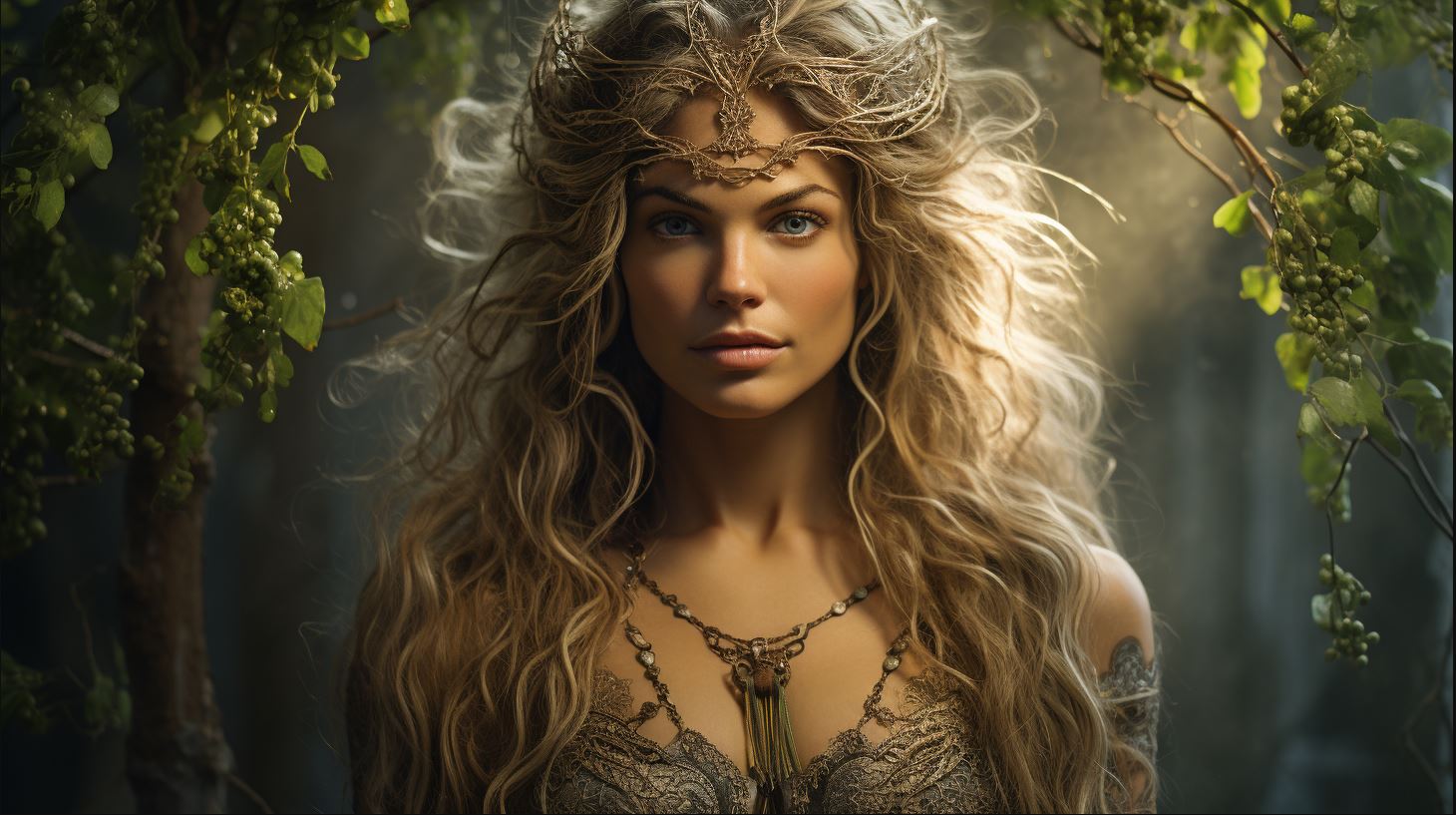
Anu Celtic goddess holds a significant role in Irish mythology. She is revered as the mother goddess, known for her connections to the Túatha Dé Danaan, the mythical fairy folk of Ireland.
Danu, another name for Anu, symbolizes the divine motherhood deeply intertwined with the land. The historical confusion surrounding Anu, Danu, and Morrigan highlights the complexity of understanding their distinct roles.
In this article, we explore the origins of these goddesses, their significance in Celtic tradition, and their possible connections to Welsh genealogies and even the Virgin Mary.
Anu Celtic Goddess in Irish Mythology
Anu Celtic Goddess holds a significant place in Irish mythology, embodying rich symbolism and deep cultural connections.
Delving into the mythological figure of Anu unravels the layers of her identity and the roles she fulfills within Celtic beliefs. As the Mother Goddess, Anu is revered for her nurturing and protective qualities, overseeing the fertility of the land and the prosperity of her people.
The Mythological Figure of Anu
Anu, also known as Danu, stands as a prominent figure in Celtic mythology. She is revered as the divine mother, an embodiment of the ancient feminine energy that permeates the natural world.
Throughout folklore, Anu is associated with the power to create and sustain life. Her presence is felt in the gentle breeze, the fertile soil, and the flowing rivers, symbolizing the interconnectedness between nature and divinity.
Anu as the Mother Goddess in Celtic Beliefs
Within Celtic beliefs, Anu assumes the role of the Mother Goddess, serving as the progenitor of the Tuatha Dé Danaan, the legendary fairy folk of Ireland. She bestows her blessings upon the land, ensuring its fertility and abundance.
Anu’s motherly love extends not only to her divine offspring but also to the mortal inhabitants of Ireland, fostering their well-being and safeguarding their prosperity.
Connections to Irish History and Culture
Anu’s influence extends beyond mythology, ingrained deeply within Irish history and culture. She is intrinsically linked to the land, with various geographical features paying homage to her divinity. For example, the hills in County Kerry, known as “The Paps of Anu” or “The Pechos de Danu,” stand as symbolic landmarks, reminding individuals of her enduring presence.
The reverence for Anu in Irish culture is a testament to the lasting impact of Celtic mythology. Her depiction as the Mother Goddess resonates with the strong familial values and deep connections to nature prevalent in Irish society.
The legacy of Anu reminds us of the profound spiritual heritage and the enduring bond between the Irish people and their ancient roots.
Danu: The Divine Mother of the Tuatha Dé Danaan
An essential figure in Celtic mythology, Danu holds the esteemed title of the Divine Mother within the Tuatha Dé Danaan, the mythical race of beings in Ireland.
Let’s explore the fascinating story of Danu, her deep connection with the Tuatha Dé Danaan, and the symbolism and importance she carries within Celtic tradition.
The Story of Danu in Celtic Mythology
According to ancient Celtic mythology, Danu emerges as a prominent deity, representing divine motherhood and primordial power.
Although records of her story are scarce, her presence is widely felt within the intricate fabric of Celtic beliefs and tales.
Legends suggest that Danu played a vital role in the formation of the Tuatha Dé Danaan.
She is said to have given birth to their leaders, including the god Dagda, the goddess Brigid, and the god Lugh. Through her divine lineage, Danu became an integral part of the Tuatha Dé Danaan’s identity and collective consciousness.
Danu and the Tuatha Dé Danaan
As the Divine Mother, Danu was revered as the progenitor of the Tuatha Dé Danaan, bestowing upon them their unique qualities and powers. She guided her children, nurturing their growth, wisdom, and magical abilities.
The Tuatha Dé Danaan, also known as the “People of href=”https://oldworldgods.com/irish/danu-celtic-goddess/”>Danu,” cherished their divine connection to Danu. They held her in high regard, honoring her as their ancestral source, shaping their beliefs, traditions, and interactions with the spiritual realm.
The Symbolism and Importance of Danu in Celtic Tradition
Within Celtic tradition, Danu symbolizes the nurturing and life-giving aspects of the natural world. She embodies the Earth’s fertility, embodying its bountiful harvests and the regenerative forces of nature.
As the Divine Mother, href=”https://oldworldgods.com/irish/danu-celtic-goddess/”>Danu personifies the cyclical nature of life, death, and rebirth.
Her presence reminds the Celtic people of the interconnectedness of all living beings and the eternal cycle of creation and transformation.
The importance of Danu in Celtic tradition goes beyond her role as a mythological figure.
She represents the deeply rooted connection between the Celtic people and the land they inhabit. Her reverence is intertwined with Ireland’s rich history, cultural identity, and spiritual heritage.
- Danu gave birth to the leaders of the Tuatha Dé Danaan, shaping their destiny.
- She embodies the nurturing and life-giving forces of nature.
- Danu symbolizes the cycle of life, death, and rebirth.
- Her significance extends to the deep connection between the Celtic people and the land.
The presence of Danu within the realm of Celtic mythology and belief systems resonates through the ages, reminding us of our connection to the natural world and the eternal cycles of existence.
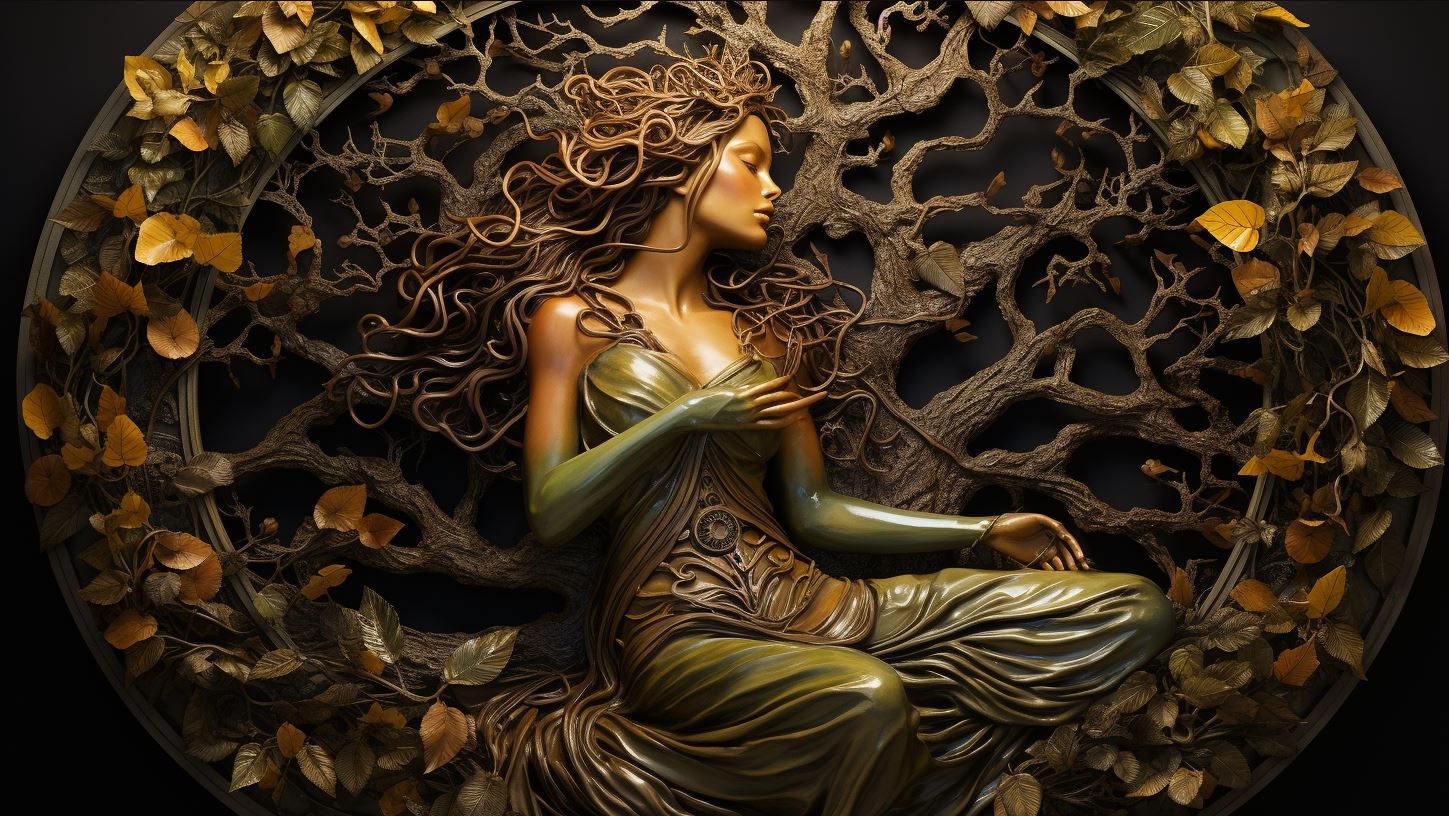
Ana: The Goddess of Prosperity and Fertility
Ana, a prominent figure in Celtic mythology, is revered as the goddess of prosperity and fertility. Her association with abundance and agricultural prosperity makes her a vital deity in the Celtic belief system.
Let’s explore the different aspects of Ana’s role in Celtic traditions and her significance in various domains.
Ana’s Association with Prosperity and Agriculture
Ana’s connection to prosperity and agriculture is deeply rooted in Celtic lore. She is attributed with ensuring a bountiful harvest and the overall well-being of crops. Farmers and communities often sought her blessings to ensure a successful and abundant harvest.
The belief in Ana’s ability to bring prosperity and sustenance to the land played a vital role in the Celtic agricultural practices.
The Role of Ana in Celtic Death and Regeneration Beliefs
Beyond her association with prosperity, Ana also plays a significant role in Celtic beliefs surrounding death and regeneration.
She is believed to guide souls in their journey to the Otherworld and facilitate the process of rebirth. Ana’s presence in the cycle of life and death reflects the innate connection between fertility, regeneration, and the continuation of existence in Celtic mythology.
Ana among the War Goddesses and Other Celtic Deities
Ana’s influence extends beyond prosperity and fertility. She is often depicted as a fierce warrior goddess, embodying strength and bravery. Alongside other war goddesses in Celtic mythology, Ana assumes a protective role, defending her people from external threats and ensuring their well-being.
Her multifaceted nature showcases the complexities of Celtic deities and their diverse range of attributes.
In conclusion, Ana, the goddess of prosperity and fertility, holds a prominent place in Celtic mythology.
Her association with abundance and agricultural prosperity, along with her involvement in realms of death and regeneration, illustrates the depth of her influence. Additionally, her role as a war goddess highlights the multifaceted nature of Celtic deities.
Understanding Ana’s significance offers a glimpse into the intricate connections between nature, prosperity, and spiritual beliefs in Celtic culture.
The Historical Confusion: Anu, Danu, and the Morrigan
Exploring the complexities of Celtic mythology, it becomes evident that the figures of Anu, Danu, and the Morrigan have been historically intertwined and often confusing. This section aims to shed light on the origins and interpretations surrounding their identities.
Debunking the Myth of Danu: Origins and Interpretations
There has been ongoing debate regarding the existence of a goddess named Danu in Celtic mythology. Some scholars argue that Danu is a hypothetical reconstruction based on the possessive “Danann” and lacks textual evidence.
It is believed that Danu might have emerged from an interpretation of the collective motherhood concept represented by the Tuatha Dé Danaan, rather than being an individual deity.
The Fusion of Anu, Morrigan, and Other Goddesses
Another factor adding to the confusion is the fusion of various goddesses, including Anu, Danu, and the Morrigan.
These divine figures are sometimes interchangeably referenced, creating difficulties in untangling their distinct attributes and roles. The overlap between Anand, Danand, and Morrigan further complicates the matter, making it challenging to decipher their individual significance in Celtic mythology.
The Debate of Anand/Morrigan as the Mother of Irish Gods
A subject of ongoing scholarly debate revolves around determining the true mother of the gods in Irish mythology. While some theories propose Anand or Morrigan as the mother figure, there is no definitive evidence supporting either claim.
Exploring genealogical connections, certain theories speculate that Anand/Morrigan might have played a significant role as the maternal influence over the Irish gods.
In conclusion, the historical confusion surrounding Anu, Danu, and the Morrigan highlights the interpretative challenges present in Celtic mythology.
By examining their origins, the fusion of deities, and debates on the maternal figure of the gods, we can gain a deeper understanding of their complex roles within Celtic folklore.
Related Figures and Legends
Aine Cli: The Daughter of Manannán mac Lír
Aine Cli holds a significant place in Celtic mythology as the daughter of Manannán mac Lír, the sea god.
Regarded as a divine protector of Munster, Aine Cli embodies aspects of prosperity, fertility, and sovereignty. Her connection to the land and agricultural abundance further enhances her role as a symbol of growth and nourishment.
Aine Cli’s presence in Celtic lore showcases the interplay between gods and goddesses, highlighting the importance of lineage and familial connections.
Variations of Ana/Anna in Welsh Genealogies
Welsh genealogies offer intriguing insights into the variations of the name Ana/Anna and its connections within Celtic traditions. These genealogical records suggest that Anna may be related to Beli, an ancient Welsh deity, and considered a relative of the Virgin Mary.
Although interpretations of these genealogies vary, they exhibit the enduring influence of Celtic mythology and its integration with later Christian beliefs.
Connections with the Virgin Mary and Christian Influence
The parallels drawn between Celtic goddesses like Anu and the Virgin Mary demonstrate the assimilation of pagan beliefs into Christianity. As the early Christian faith spread across Celtic lands, similarities were noticed in the divine qualities and roles of these influential female figures.
The connections with the Virgin Mary reflect the cultural and religious synthesis that occurred, highlighting the resilience and adaptability of Celtic spirituality in the face of religious transformations.
.












